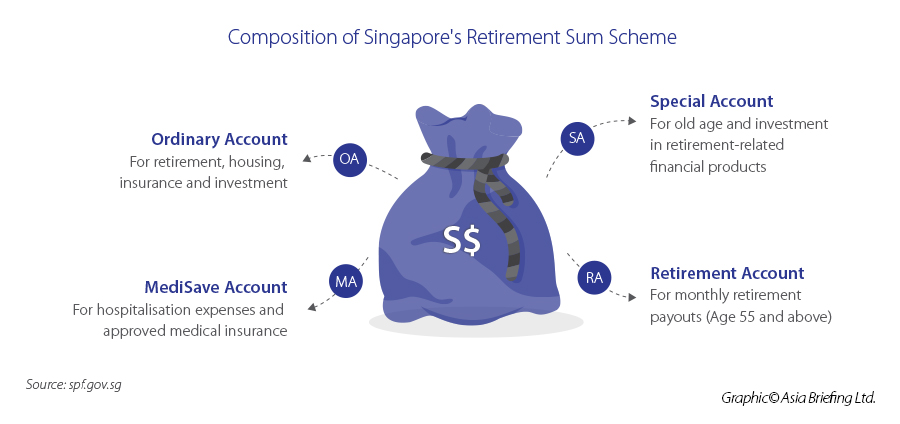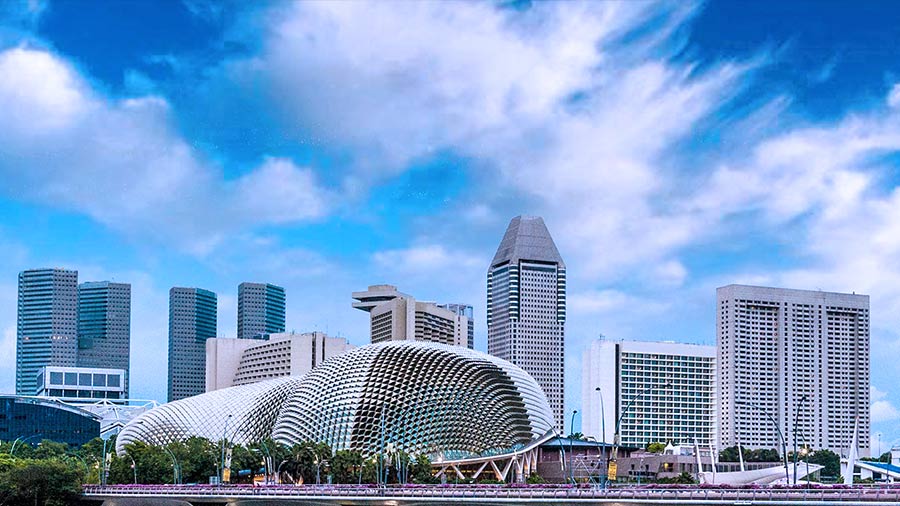Human resource management in Singapore has evolved in tandem with the dynamic and competitive market environment. The Singaporean government has long supported a centralized system for managing its human resources, and foreign investment continues to have an impact.
Laws impacting human resource management in Singapore
- The Employment Act (1968);
- Employment of Foreign Manpower Act (1990);
- Retirement and Re-employment Act (1993);
- Child Development Co-savings Act (2001);
- Workplace Safety and Health Act (2006); and
- Work Injury Compensation Act (2019).
The Employment Act (EA)
The Employment Act (EA) is the main labor law in Singapore. The Act regulates employment terms and conditions for all employees under a work contract with an employer.
The EA covers the following:
- Employment contracts;
- Minimum days for giving notice of termination of contract;
- Actions employers are entitled to upon misconduct of employees;
- Salary periods, time of payment;
- Maternity protection and benefits, and childcare leave for parents and
- Public Holiday, leave, and sick leave entitlements.
Who does the EA apply to?
The law covers both foreign and Singaporean employees who are hired under the following terms:
- Full-time employment;
- Part-time employment;
- Temporary employment; and
- Under a special work contract.
Further, an employee is also protected under the EA if they receive payments:
- Hourly;
- Daily;
- Monthly; or
- Piece rated.
The EA covers every employee who is under a contract of service with an employer, except for the following:
- Domestic workers;
- Seafarers; and
- Government employees or statutory board employees.
Managers and executives are also covered by the EA. However, Part IV of the Act, which deals with rest days, working hours, and other employment conditions, applies only to the following individuals:
- Workers engaged in manual labor (workmen).
- Employees who are not workmen but are still protected by the Employment Act, earn a monthly basic salary of up to $2,600 (US$1,933) with an overtime rate capped at S$2,600 (US$1,933).
Employees with executive and supervisory functions (managers or executives) as well as professionals with tertiary education and specialized knowledge or skills whose employment terms are like those of managers or executives (e.g., Chartered Accountants, Doctors, or Advocates) are not covered by Part IV of the Act.
Employment contracts
The employer is required to issue the Key Employment Terms within 14 days of the start of employment.
This should include the following details:
- Full names of the employer and employee;
- Details of employment – job titles, main duties and responsibilities, duration of employment, and start date;
- Working arrangements – working hours, number of working days, rest days;
- Salary – Salary period, basic salary or basic rate of pay, fixed allowances and deductions, overtime pay, bonus, incentives etc.;
- Leave and medical benefits; and
- Probation period, notice period.
Working hours
For employees covered under the Employment Act Part IV, contractual working hours cannot exceed 8 hours per day or 44 hours per week.
This excludes break time and overtime. If the employee works more than 8 hours per day or 44 hours per week, then they must be compensated with overtime pay, which is 1.5 times the hourly basic rate of pay.
Employees cannot work more than 12 hours per day, inclusive of overtime, unless under specific circumstances such as national security.
Employees covered under the EA are entitled to one rest day per week, without pay. If the employee works on their rest day, they are entitled to more pay. This is as follows.
- If the employee works on their rest day, at the employer’s request, they can earn one day’s salary for up to half of the normal daily working hours. They can earn two days’ salary for more than half of the normal daily working hours, and two days’ salary plus overtime for work that is beyond the normal daily working hours; and.,
- If the employee works on their rest day, but it’s at the employee’s request, they can earn half a day’s salary for up to half of the normal daily working hours. They can earn one day’s salary for more than half of the normal daily working hours, and one day’s salary plus overtime for work that is beyond the normal daily working hours.
The regulation on working hours only applies to workmen, generally defined as someone who works in manual labor and does not earn more than S$4,500 per month (US$3,347), and non-workmen who are covered under the EA and earns no more than S$2,500 (US$1,859) per month.
Salary and wages
The statutory requirement for wages is that they should be paid no more than seven days after the end of the salary period. For example, if the salary period is between January 1 and 31, the salary needs to be paid by February 7.
If the employee is entitled to overtime pay, this must be transferred within 14 days of the salary period.
Public holidays
Employees under the EA are entitled to 11 paid public holidays per year. If an employee must work on a public holiday, they can receive an extra day’s salary or be granted a day off in lieu.
Sick leave
The employee is entitled to paid sick leave if:
- The employee is covered under the Employment Act;
- The employee has served the employer for at least 3 months; and
- The employee has tried to inform the employer within 48 hours of their absence.
The number of days of paid sick leave and paid hospitalization leave depends on how long the employee has worked in the company.
|
Paid Sick Leave and Paid Hospitalization Leave in Singapore |
||
|
Number of months of completed service |
Paid sick leave (days) |
Paid hospitalization leave (days) |
|
3 months |
5 |
15 |
|
4 months |
8 |
30 |
|
5 months |
11 |
45 |
|
6 months and above |
14 |
60 |
Medical certificates (MC) issued by doctors and dentists registered under the Medical Registration Act, 1997 and the Dental Registration Act, 1999 are now recognized. This provides employees with the convenience to visit doctors closer to home.
However, this policy does not impact the reimbursement of medical consultation fees. Employers are only required to reimburse fees from government doctors or company-approved doctors.
Annual leave
Employees are entitled to paid annual leave after working with their employer for at least three months.
|
Years of service |
Annual leave (days) |
|
1 |
7 |
|
2 |
8 |
|
3 |
9 |
|
4 |
10 |
|
5 |
11 |
|
6 |
12 |
|
7 |
13 |
|
8 and above |
14 |
Maternity leave
Only Singaporean residents are entitled to paid maternity leave. The length is usually 12 weeks but if the child is a Singaporean citizen, then 16 weeks of maternity is provided.
There are other conditions that must be fulfilled to receive maternity leave:
- The mother must be legally married to the father;
- Employment must have begun at least three months before the birth of the child; and
- The first eight weeks of maternity leave are paid by the employer, and the next eight weeks by the government.
Terminating employees
The termination of employment in Singapore can be implemented by either the employee or the employer and both parties must follow the terms and conditions for termination stated in the contract of service. Employees are generally hired with a probation of three to six months and will be hired as permanent employees after the probation period ends.
It is vital for all employees to be sure exactly what their employment contract says so that they can proceed accordingly. The termination of the contract of service can occur in the case of:
- Employee resignation;
- Employer dismissal; or
- Expiration of the contract terms.
Social insurance
The Central Provident Fund (CPF) is a social security savings scheme funded by contributions from employers and employees. This mandatory program aims to meet the retirement, housing, and healthcare needs of its people. Individual CPF funds are further subcategorized into three savings accounts:
- Ordinary Account;
- Special Account; and
- Medisave Account.

Retirement and re-employment age
The retirement and re-employment ages are 63 and 68, respectively, and will increase to 65 and 70 by 2030.
Businesses can raise their retirement and re-employment ages ahead of the scheduled timeline.
Hiring foreign employees
To hire a foreign employee, employers must apply for the requisite work permit on behalf of their employee, such as an Employment Pass (EP) or S Pass.
Under the Fair Consideration Framework (FCF) and the Tripartite Guidelines on Fair Employment Practices, Singapore imposes rules preventing companies from pre-selecting foreign candidates to ensure that domestic employers are provided with a fair opportunity to apply for a job opening.
Therefore, employers wishing to submit an application for an EP to hire a foreign employee must first advertise the position on the MyCareersFuture website and consider and evaluate all applicants fairly. However, this is not applicable to companies with less than 10 employees and to overseas transfers from the same corporate group.










